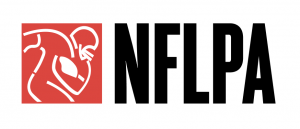New NFL CBA Solidifies On-Field Broadcast Audio for the Future
The role of on-player sensors has been significantly expanded
Story Highlights
The NFL Players Association (NFLPA) ratified its new Collective Bargaining Agreement (CBA) in March, the culmination of nearly a year’s worth of haggling and angling, getting it across the goal line just as every other sport on television went on hiatus. It remains to be seen if the COVID-19 lockdown will impact the NFL’s 2020-21 season, but the new CBA has locked in the on-field–audio stipulations introduced in the 2011 CBA.
 Using virtually the same wording as the previous agreement, the new CBA continues the collection of audio from microphones on football players. As stated in Section 13 of both iterations, NFL Films is permitted to put microphones on any players that NFL Films, the league’s media arm, selects. During the regular season, each starting quarterback will be required to wear a microphone at least once, although no player will be required to wear a microphone for this purpose more than four times during any regular season. However, there is no limitation on the number of times a player can be required to wear a microphone during preseason or postseason play. Players must still give permission to use any audio they generate in this manner.
Using virtually the same wording as the previous agreement, the new CBA continues the collection of audio from microphones on football players. As stated in Section 13 of both iterations, NFL Films is permitted to put microphones on any players that NFL Films, the league’s media arm, selects. During the regular season, each starting quarterback will be required to wear a microphone at least once, although no player will be required to wear a microphone for this purpose more than four times during any regular season. However, there is no limitation on the number of times a player can be required to wear a microphone during preseason or postseason play. Players must still give permission to use any audio they generate in this manner.
Live ambient sound will continue to be captured using microphones embedded in linemen’s shoulder pads and wired by NFL Films technicians. The microphones will be opened after the offense breaks the huddle and will be closed a few seconds after the snap of the ball.
Still off limits is sound when players are in locker rooms, in the huddle, or on or around team bench areas. Transmissions of all audio will be encrypted.
More Data Collected
One significant change in the new CBA is how on-player sensors, used to monitor player performance and related safety and health data, are managed, with clear rules for ownership and use of player data from those sensors.
The 2011 CBA included a single paragraph subsection as part of the Section 13 audio language, essentially requiring players to wear sensors during practice and play from preseason through postseason play. The 2020 CBA dedicates a whole section to sensor applications. The new Section 14 spells out the types of data to be collected, such as distance, velocity, heart rate, skin temperature, blood oxygen, and other biometrics.
The CBA does provide for the use of some of this data for commercial applications, including broadcast uses, with the consent of the NFLPA. Revenue from such uses will be shared between the league and players.
The expanded sensor and data language reflects heightened concern by the league and the players around health and safety. But it’s also part of a deeper fan-engagement strategy in which viewers can see players’ on-field location on their mobile or desktop device during specific games in real time. Fans can also have access to a play-predictor diagram that analyzes historical data to determine the likelihood of certain plays. The data will also enhance fantasy-football participation, among other things.
